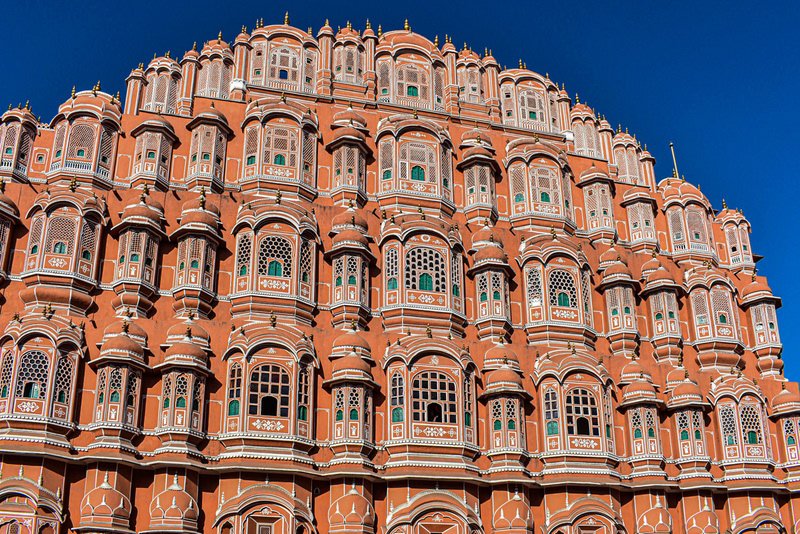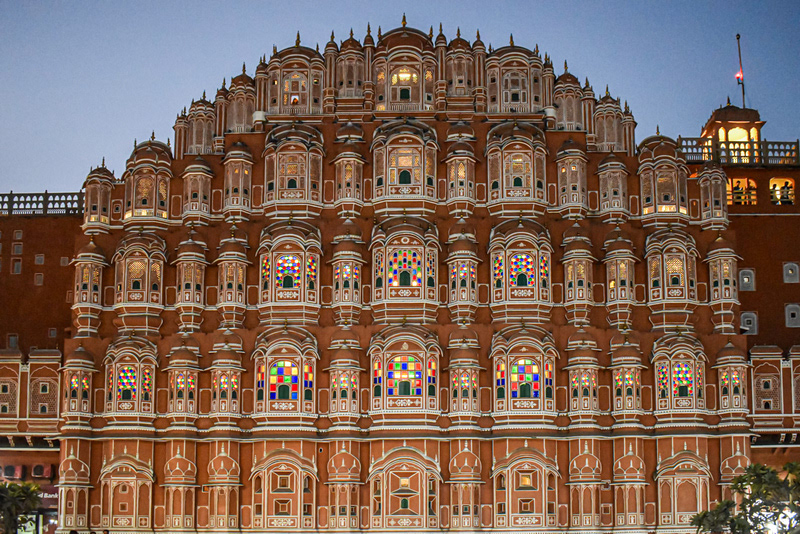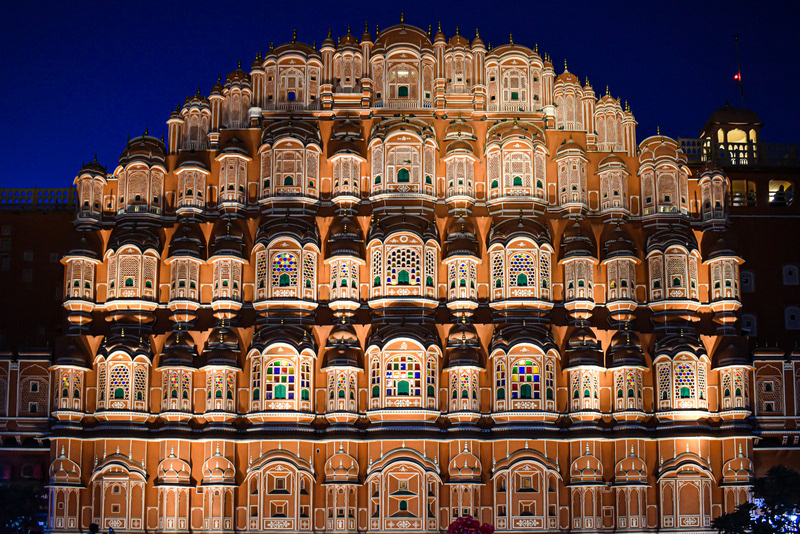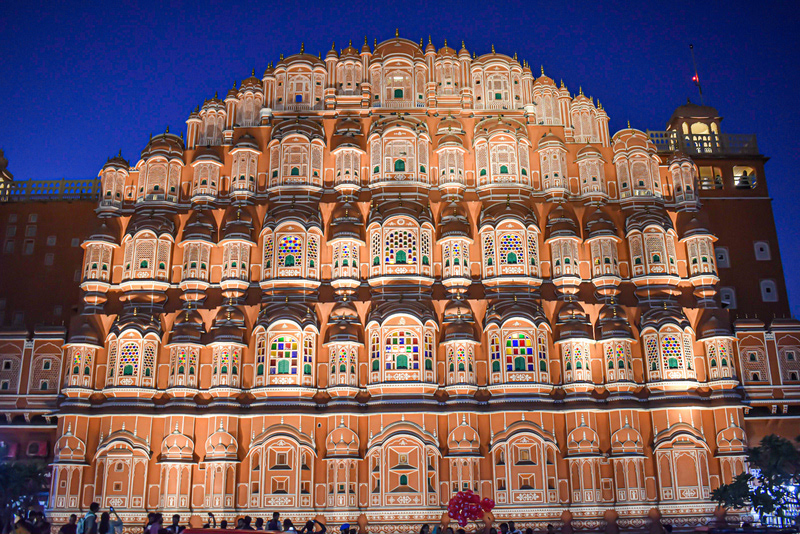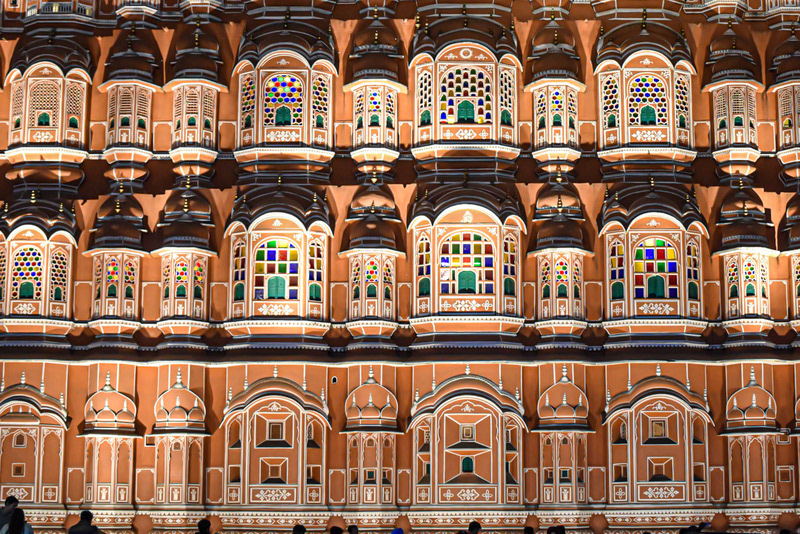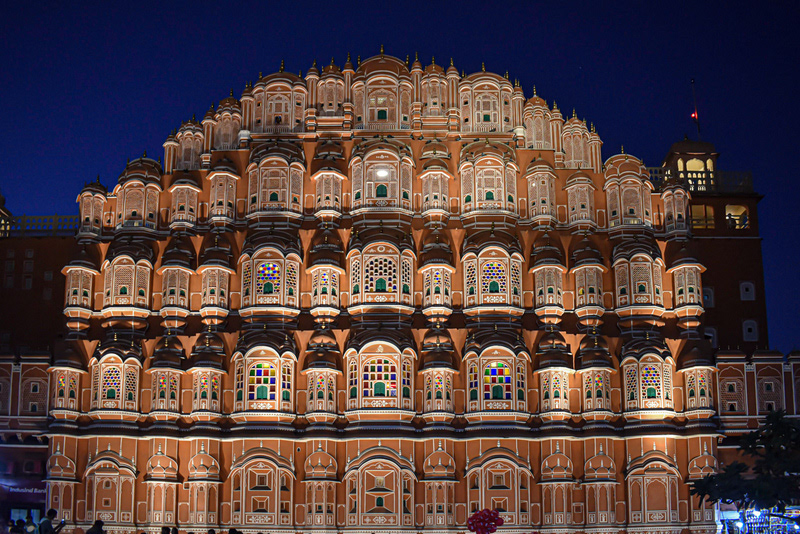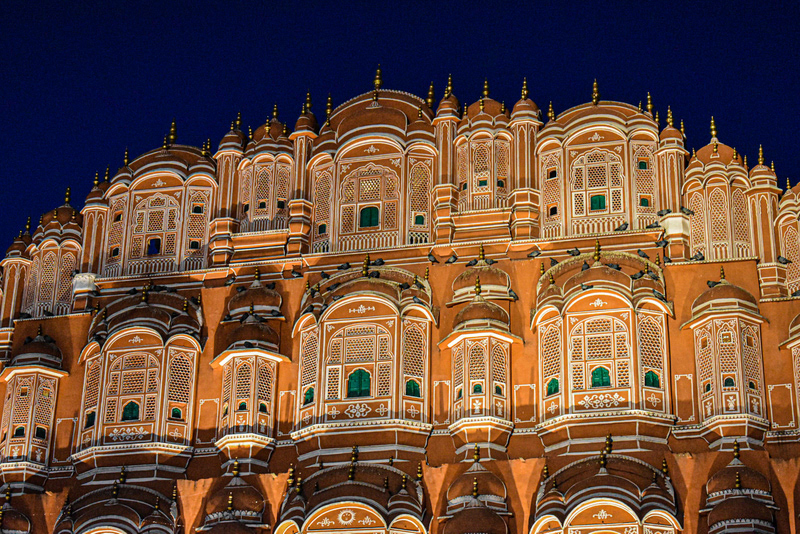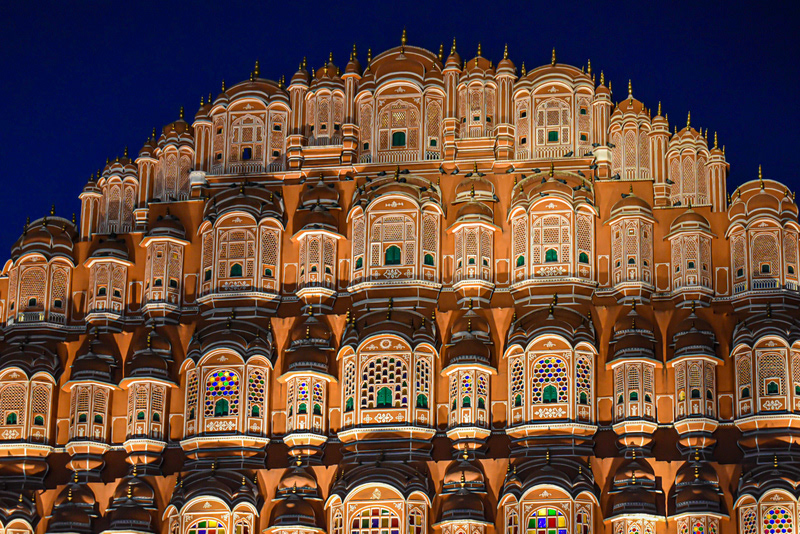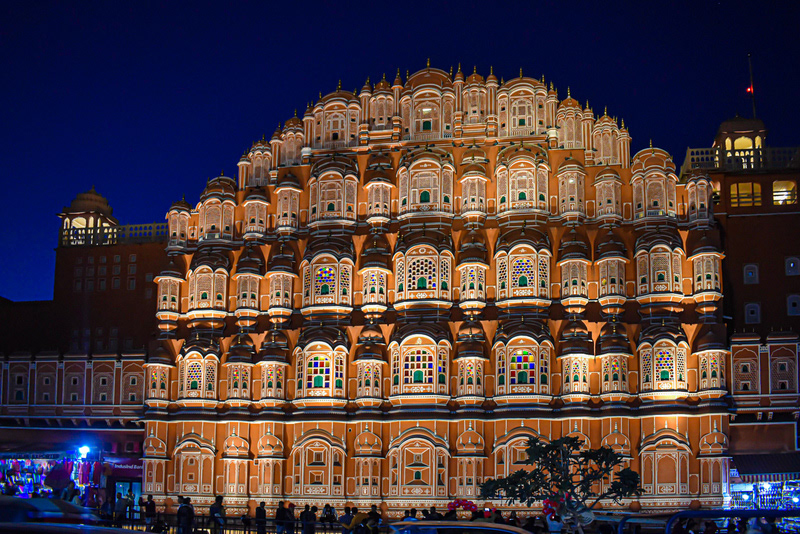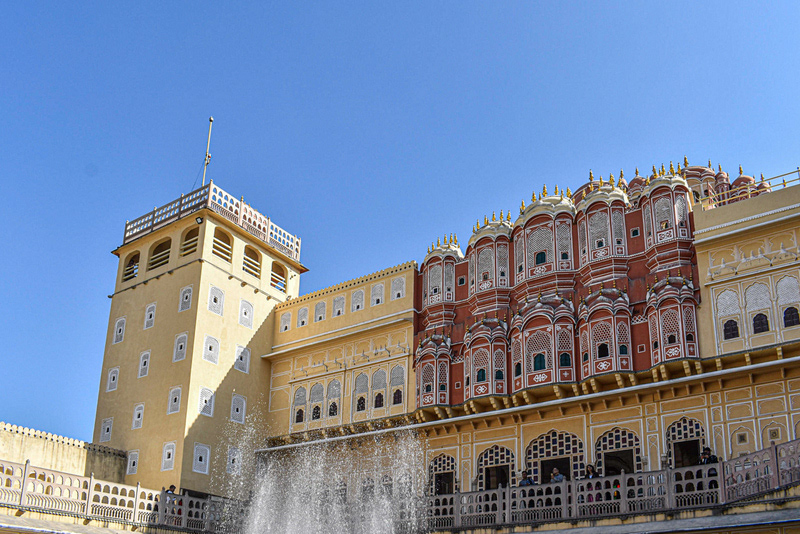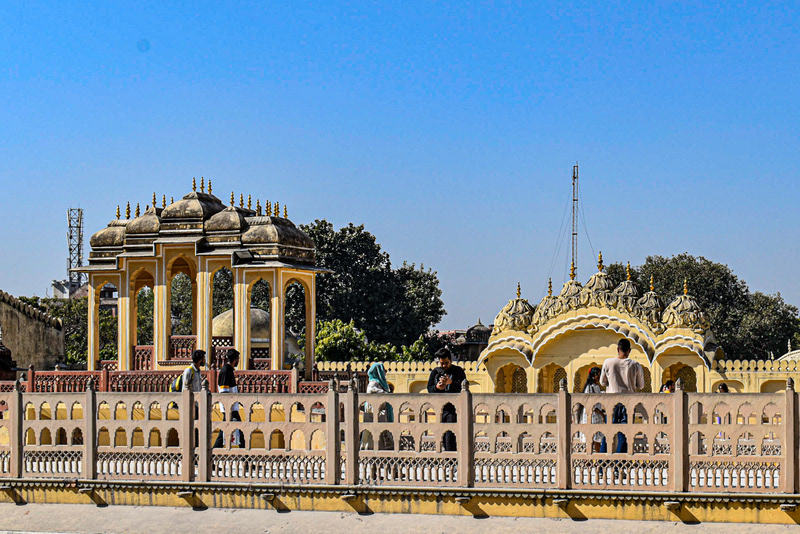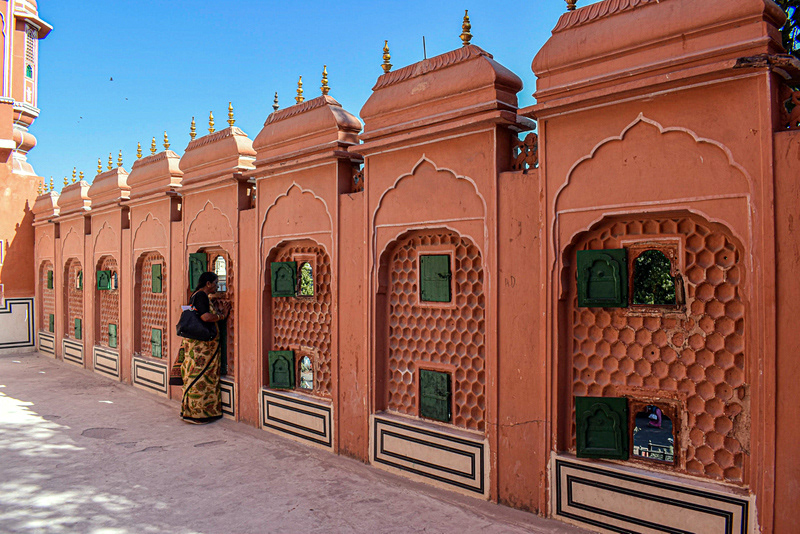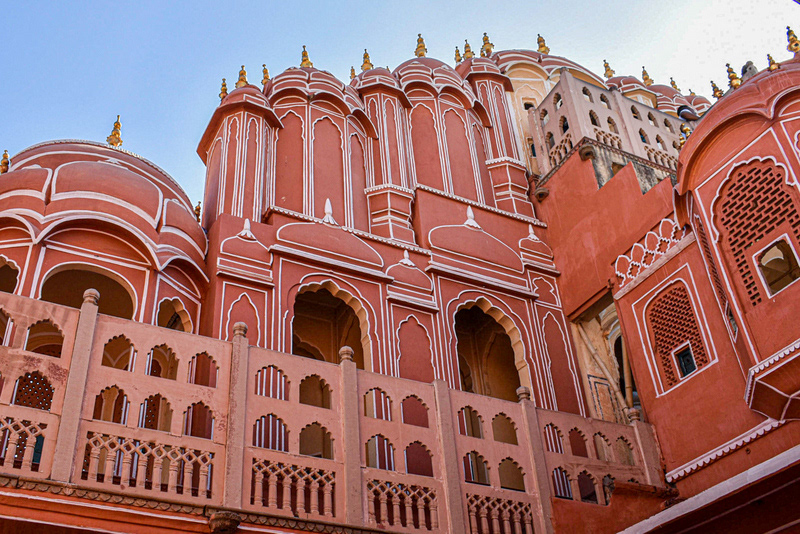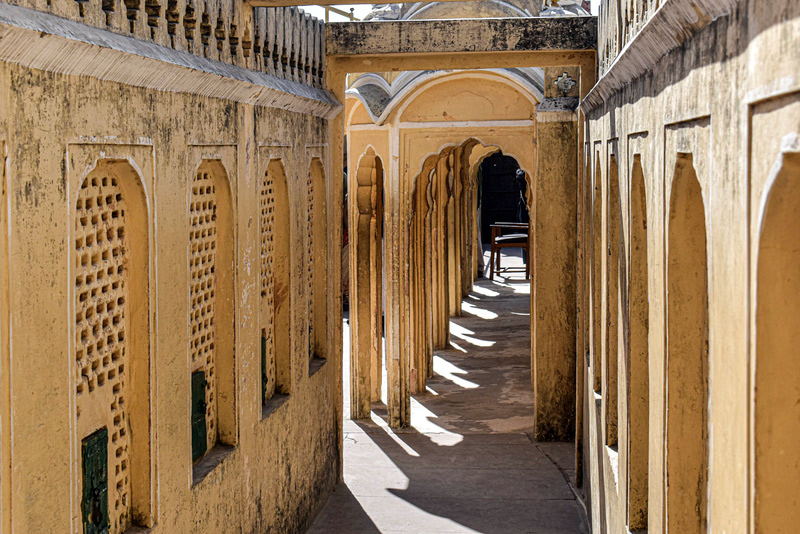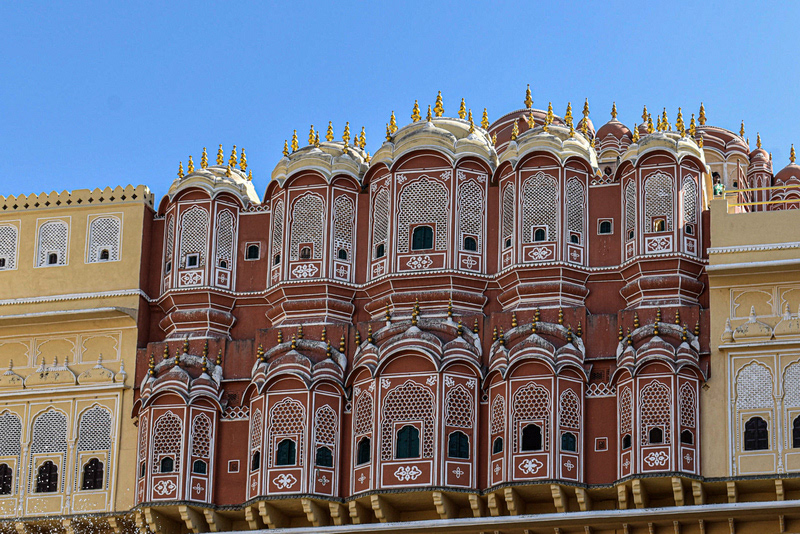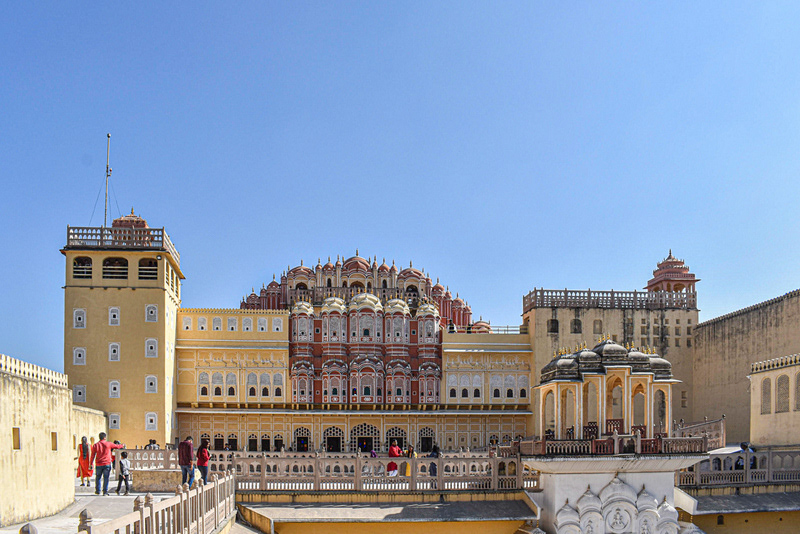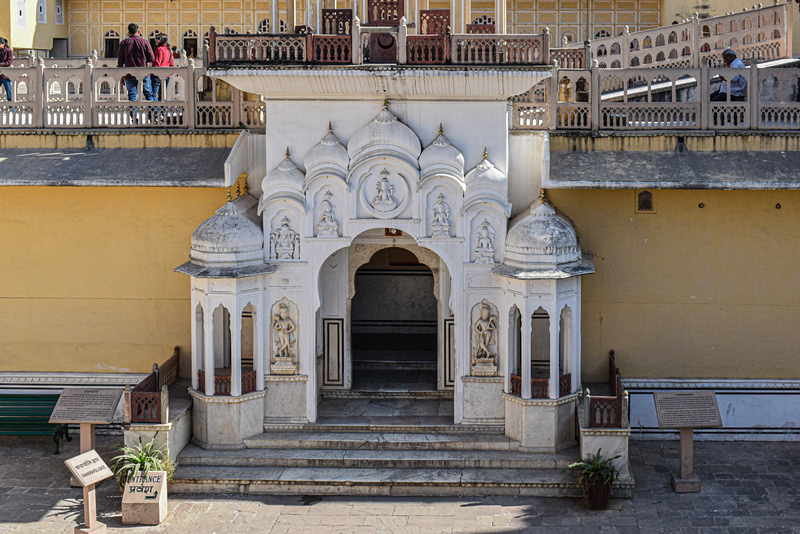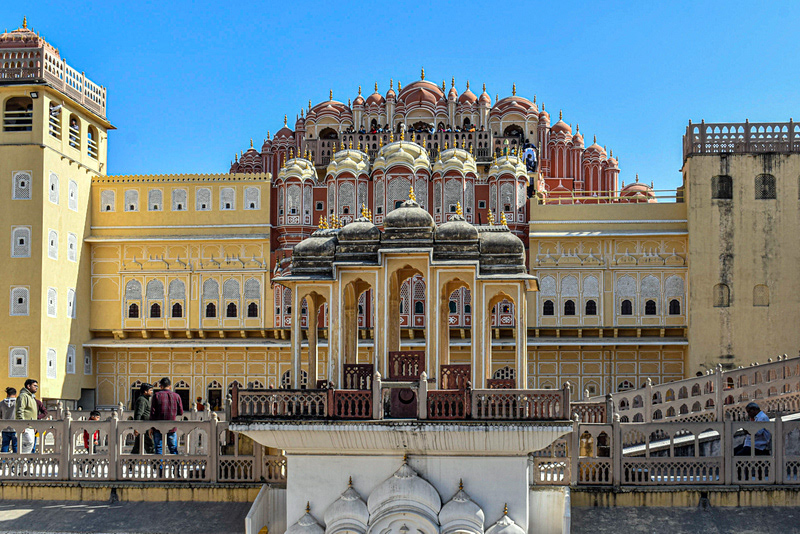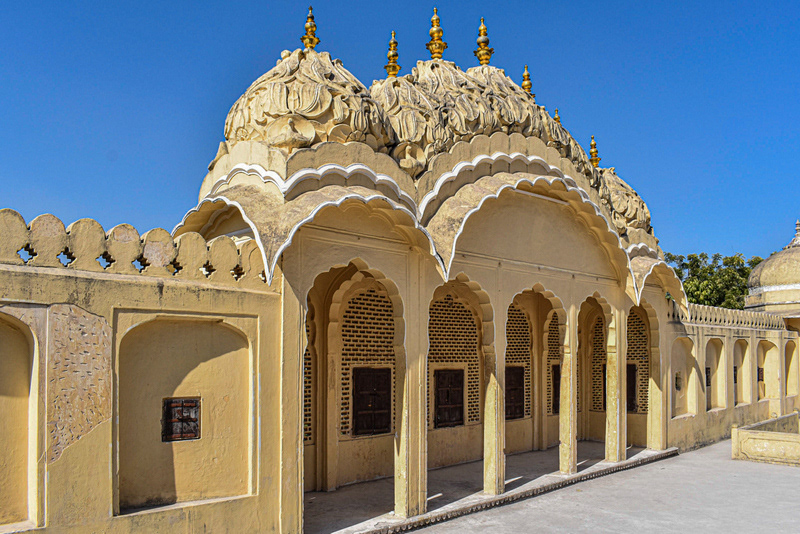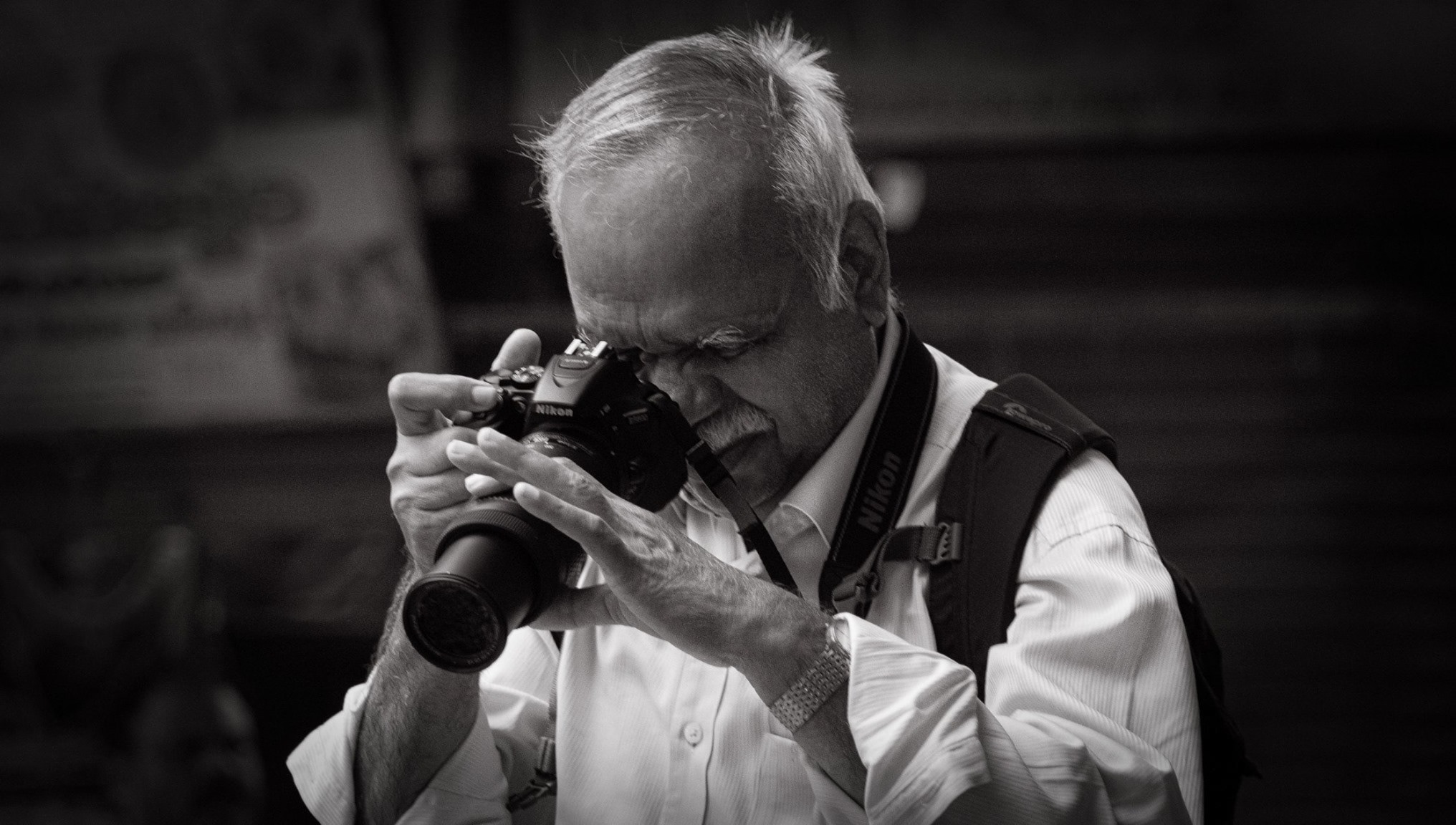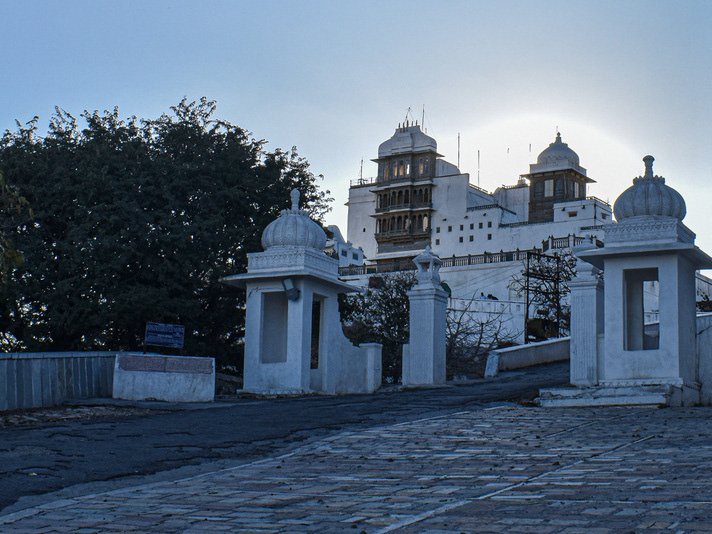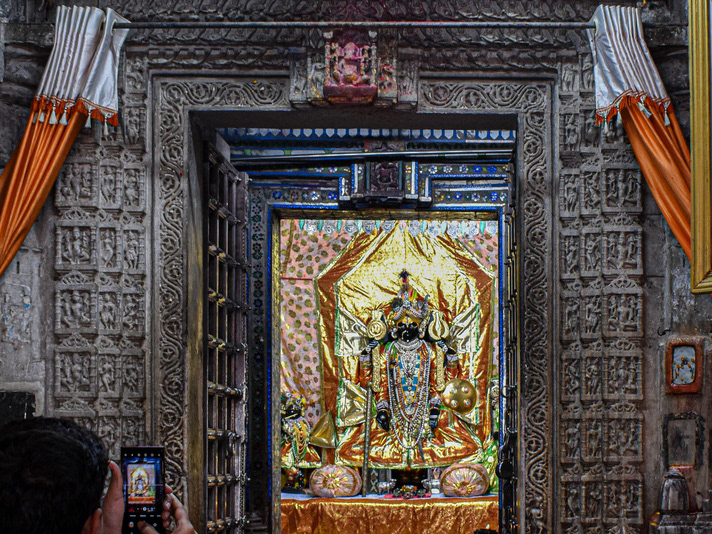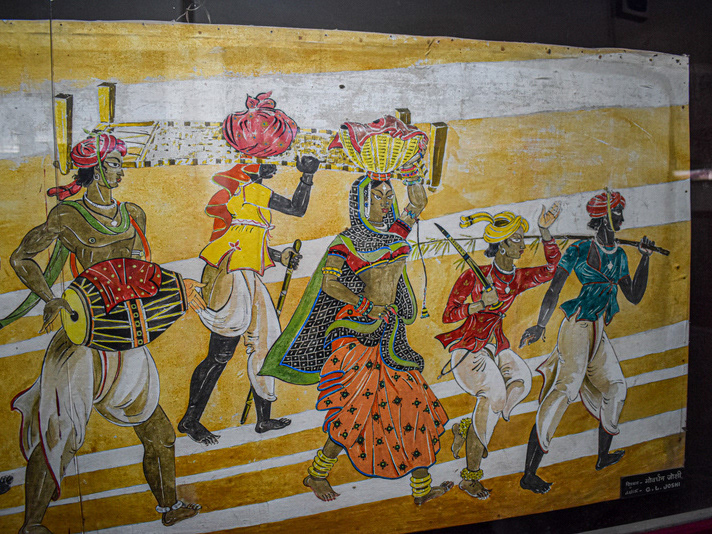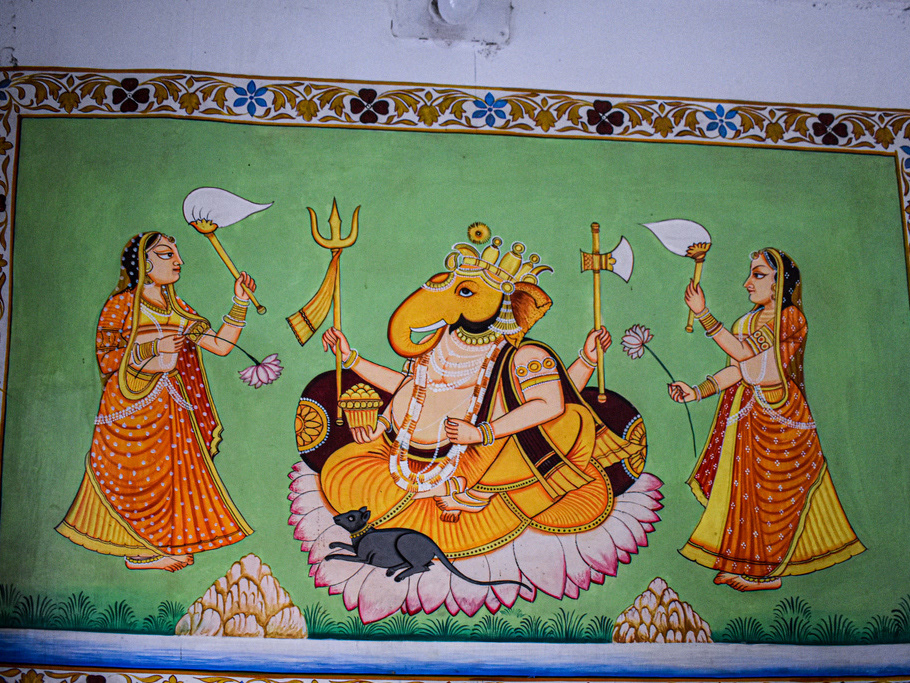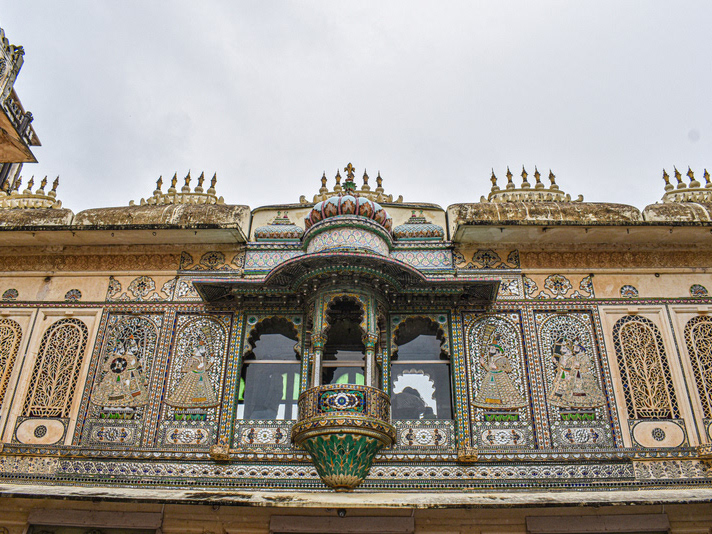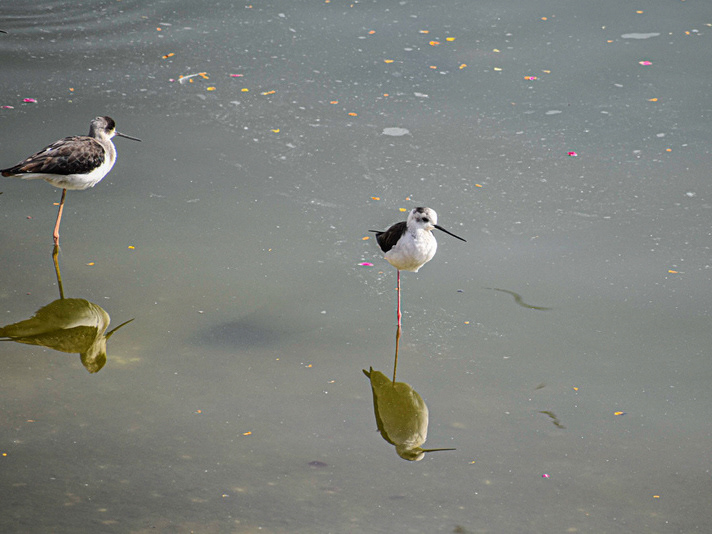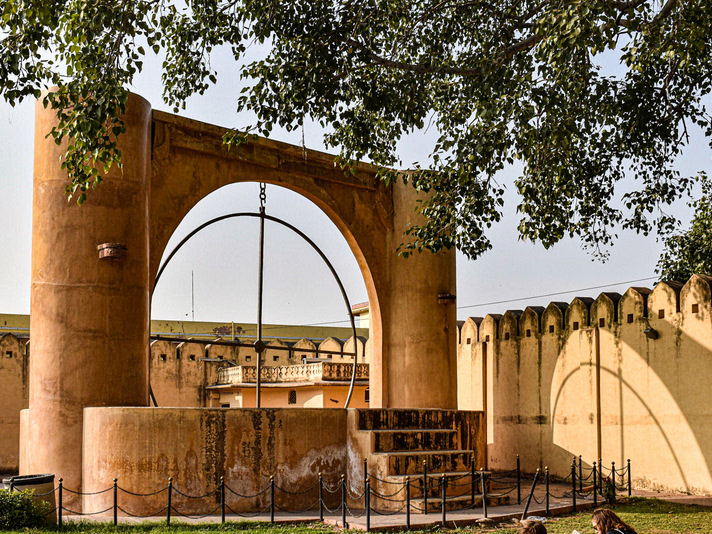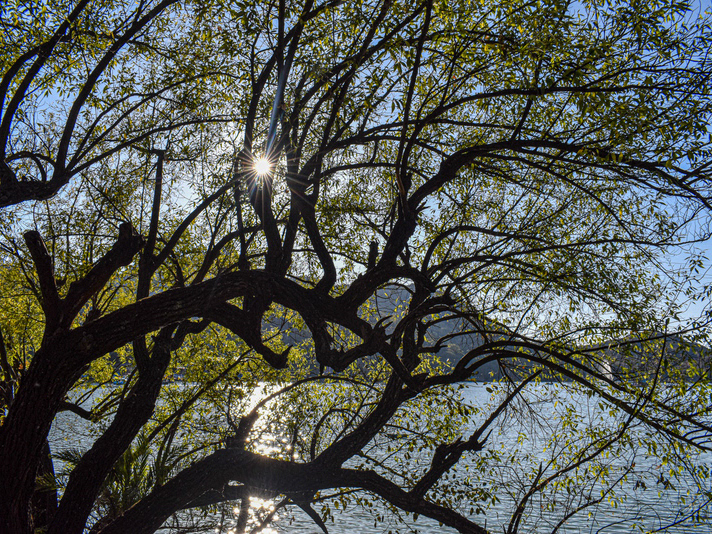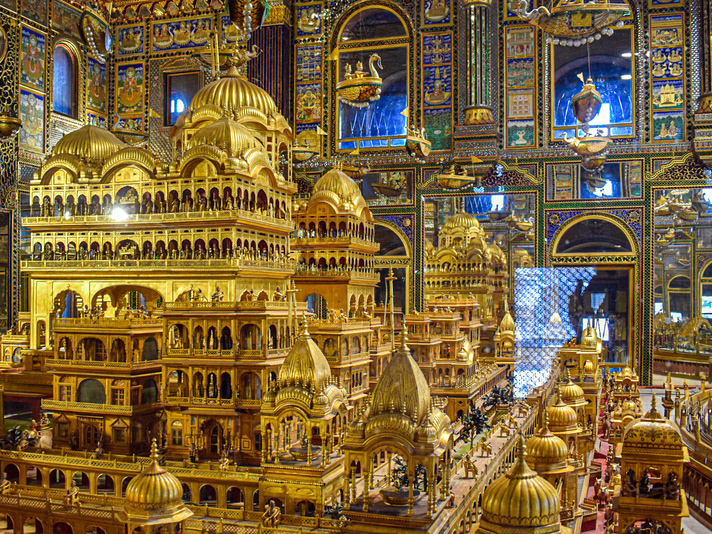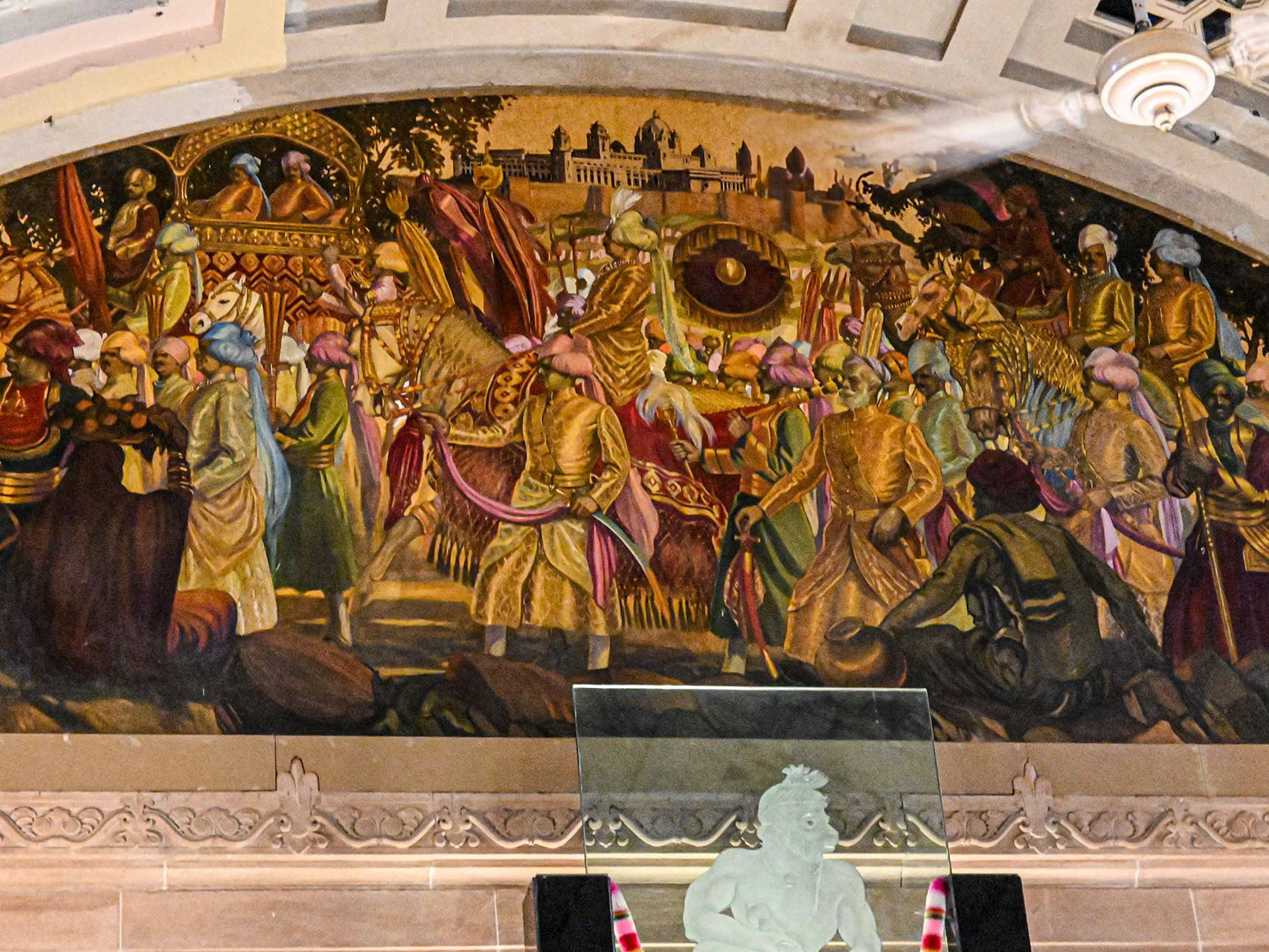Hawa Mahal was built by Kachhwaha Rajput ruler Maharaja Sawai Pratap Singh in the year 1799. When the maharaja saw the structure of Khetri Mahal in Jhunjhunu, Rajasthan, he was so impressed that he decided to build a palace modeled on it. Hawa Mahal, also called the Palace of Breeze, was the result of that inspiration.
This five-storied structure was designed by Lal Chand Ustad as an extension of the City Palace. Starting from the City Palace’s edge, Hawa Mahal extends to the women’s chambers aka zenana. During those days, the Purdah system was strictly followed and Royal Rajpur women weren’t allowed to show their face to strangers or even appear in public. The palace comprises 365 windows which enabled them to get a glimpse of the day-to-day activities and festivities happening on the street below without appearing in public.
Hawa Mahal, features a splendid fusion of Islamic, Mughal, and Rajput architectural styles. Its domed canopies, floral patterns, lotus motifs, and fluted pillars, all reflect the rich Rajput style. Complementing these elements is the filigree work in stone and lavish arches, both of which draw influence from the Islamic style of architecture.
Designed in red and pink sandstone, this one-of-its-kind palace boasts of a pyramidal shape. The 87 feet highpyramid shaped five storied structure has 365 windows featured on the front part of the palace lending it a honeycombed hive look. Each story is named specifically as Sharad mandir, Ratan mandir,Vichitra mandir,Prakash mandir and Hawa mandirThanks to the exceptional latticework on these windows, the palace experiences a cooling effect as the breeze blows in through them. Delicately designed hanging cornices are another attractive aspect of Hawa Mahal’s architecture.
The interiors of the palace consist of pillared chambers and minimally ornamented corridors that reach up to the top floor. Patios adorn the front part of the first and second floors. Unlike the lower two floors, the top three floors have a width that’s not more than a single room. There are fountains adorning the center of the building’s courtyard.
